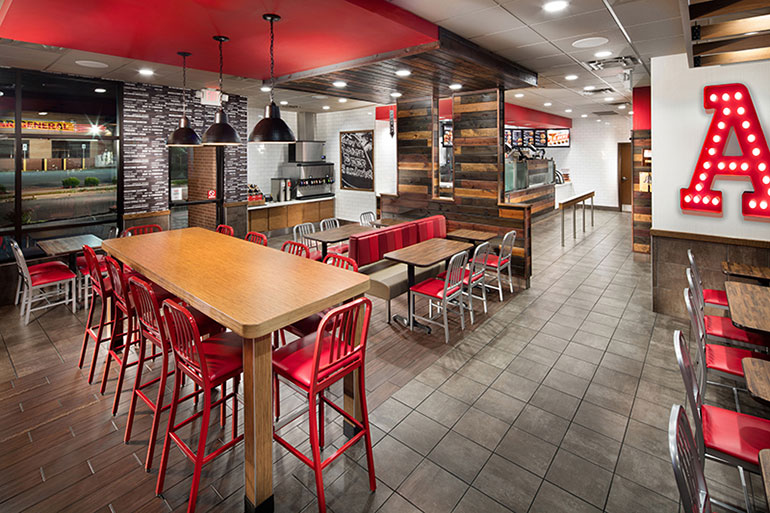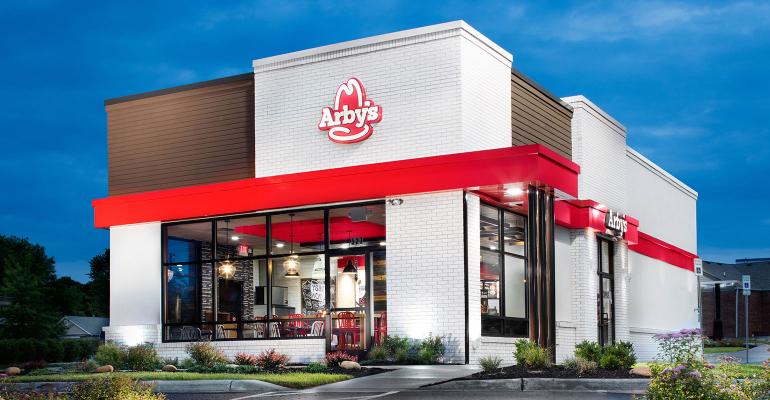Arby’s Restaurant Group Inc. on Wednesday said that its same-store sales increased 3.8 percent in 2016, including 3.2 percent in the fourth quarter, the Atlanta-based chain’s 25th straight quarter of increases.
Now, those improving sales are leading to growth of a different kind, in the form of new locations. Arby’s last year recorded the first increase in unit count last year since 2008. The chain now has 3,342 locations after adding 60 in 2016.
What’s more, the company’s pipeline for new locations is stronger now than it was a year ago, and so CEO Paul Brown said in an interview that the company expects even more growth in 2017.
 “In this industry, you’ve got to get unit economics to a compelling point,” Brown said. “Then you get people excited about the brand and they start building.”
“In this industry, you’ve got to get unit economics to a compelling point,” Brown said. “Then you get people excited about the brand and they start building.”
Since 2010, Arby’s average unit volumes have increased 40 percent, to $1.1 million.
Thanks to the unit growth and the same-store sales growth, the company’s systemwide sales reached $3.6 billion, a record for the company.
Arby’s remarkable comeback has come thanks in part to a long series of product introductions that have included items like beef brisket and pork belly that aren’t often found in the quick-service restaurant category.
“Our positioning in the market has proven to be the right thing for the brand,” Brown said. “We’re bringing in a new product every month as an LTO. A lot of these products are products you’ve never been able to get in a QSR format.”
And many of these products have been even more popular than the company anticipated.
In September, Arby’s added a new pork belly sandwich. The company bought what it thought was enough supply for six or seven weeks.
“We ran out of it in 3.5 weeks,” Brown said.
Then there was the venison promotion. In a promotion aimed at hunters in October and November, Arby’s offered up a small number of $5 venison sandwiches at a handful of restaurants in hunting-friendly areas. Many of those restaurants ran out of supply in as little as 15 minutes.
Yet the attention Arby’s received for a sandwich that was offered for one day at just 17 locations proved invaluable.
“It’s a good example of how the team tries to work together and push the envelope,” Brown said. “We started with a strategy to find groups of individuals aligned with our target audience. Hunters certainly fit that description.”
The team came up with the idea for venison steak sandwiches, and then worked with the supply chain to secure some venison for the sandwiches. “After a few months of scouring the world, we found a way to procure high quality venison, and had a great recipe for it,” Brown said.
“The amount of PR buzz and earned media we got from that was higher than the value we got from the entire Jon Stewart situation,” he added, referring Arby’s response to Jon Stewart’s jabs during his retirement in 2015 — a response for which Arby’s was lauded.
The response to Arby’s sandwiches has helped the chain generate positive traffic at a time when the restaurant industry as a whole is in a slugfest for market share. Same-store sales have been weak and traffic even weaker. And yet the “vast majority” of Arby’s same-store sales in 2016 came from transaction growth, Brown said.
“There is an appetite for new and different things,” Brown said. “It’s not just the foodies who live in New York, it’s all throughout the country. So we’re going to be doing more of that kind of stuff in 2017.”

Still, it could be difficult to top the venison sandwiches or the pork belly in 2017. And the longer the chain increases same-store sales, the more difficult it becomes to match its recent strength. On a two-year basis, for instance, same-store sales increased 11.8 percent in 2016.
The chain does have some growth levers to pull besides product innovation. It’s remodeling units, for one thing. And it just developed a mobile app that is now in testing. Arby’s plans to roll the app out systemwide this year, Brown said.
And Brown noted that, despite the growth over the years, Arby’s unit volumes remain behind many of its quick-service competitors.
“There is nothing to suggest, looking at our business model, our competitors and what they do, that there’s not more headroom to grow,” Brown said. “We’re not getting to capacity within the operating/demand model. There’s nothing to suggest we aren’t going to continue to grow.”
Contact Jonathan Maze at [email protected]
Follow him on Twitter at @jonathanmaze


Correction: Jan. 26, 2017 This story was changed to update Arby's fourth quarter same-store sales. The incorrect sales number had been provided to Nation's Restaurant News.